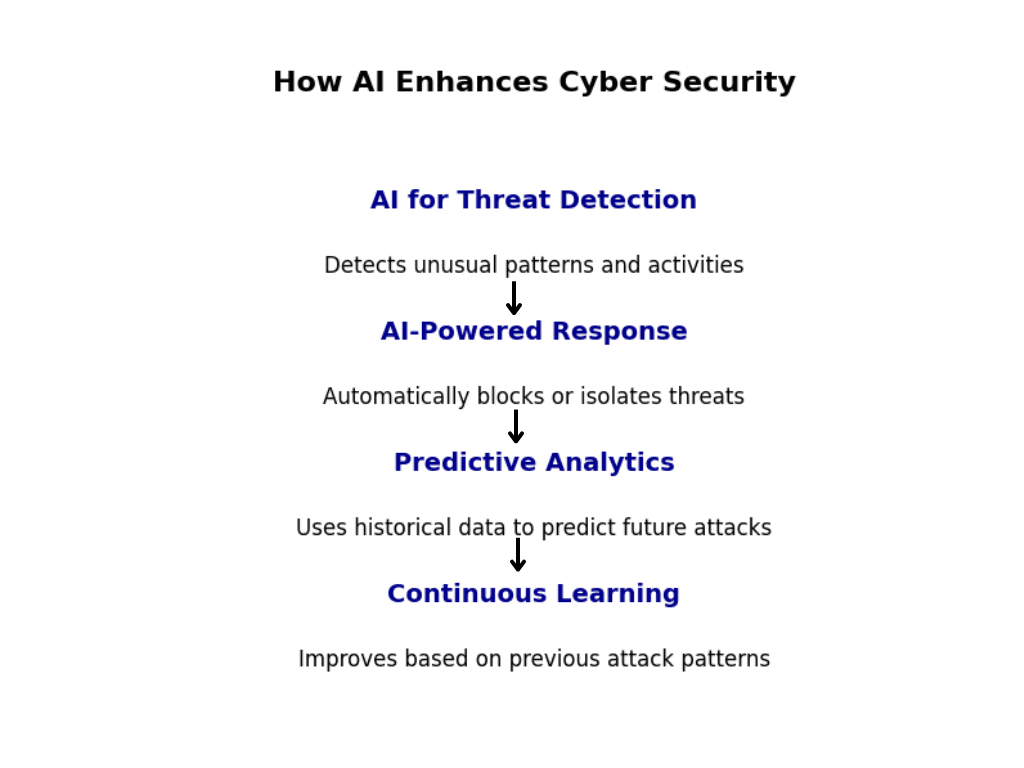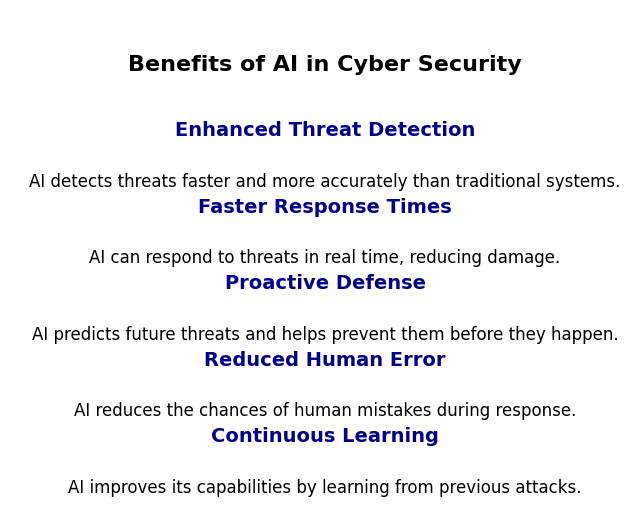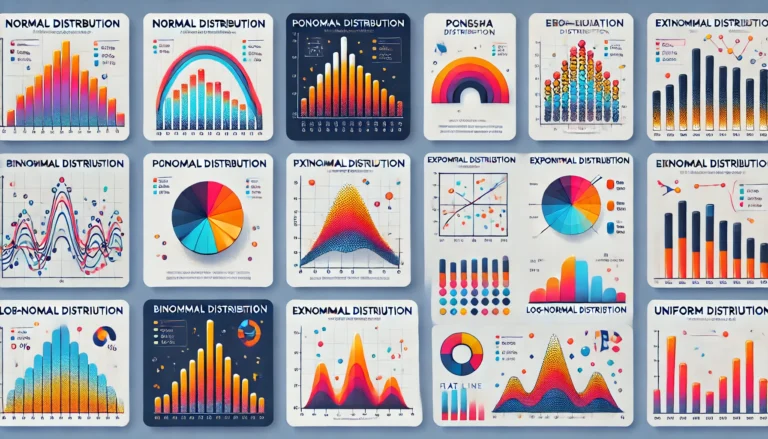AI in Cybersecurity: How Artificial Intelligence is Redefining Security in 2025
Introduction: The Evolving Cyber Security Landscape
Today, AI in Cybersecurity is crucial for everyone. It’s not just something for tech companies or governments. As we use more online services, the risks grow. Hackers and cybercriminals are finding new ways to steal data and cause problems. AI-powered security solutions are helping to stay ahead of these threats, offering better protection in an increasingly digital world.
Let’s look at the challenges we face in cyber security and why we need better solutions.
If you’re excited about how Artificial Intelligence (AI) and Machine Learning (ML) are changing the world and want to create your own models, my book, Neural Networks and Deep Learning with Python: A Practical Approach, is a great place to start. It includes easy-to-follow examples and step-by-step guidance to help you learn these concepts in a practical way.
A Brief Overview of Cyber Security Threats
The internet has made our lives easier, but it has also brought new dangers. Here are some common threats:
- Data breaches: Hackers steal sensitive information.
- Ransomware attacks: Criminals lock your data and demand money to unlock it.
- Phishing scams: Fake emails try to trick you into giving away personal information.
These threats are becoming more complex every day. Traditional security methods are often too slow or outdated to catch these new types of attacks. This is why Artificial Intelligence (AI) and Machine Learning (ML) are so valuable in cyber security.
Why We Need Innovative Solutions
Older security methods like firewalls or antivirus software are no longer enough. Cybercriminals are getting smarter and finding ways to bypass these defenses. That’s where AI-powered cyber security solutions come in.
- AI in Cyber Security: AI can process huge amounts of data quickly. It can spot unusual activity and detect threats faster.
- Artificial Intelligence for Threat Detection: AI not only reacts to threats but also predicts them. By looking at past attacks, it can spot signs of future threats and block them.
- Machine Learning in Incident Response: ML learns from every security incident. Over time, it gets better at recognizing and stopping threats more quickly.
- Predictive Analytics for Cyber Attacks: Predictive tools use data to guess where and when attacks might happen. This helps organizations prepare in advance and build stronger defenses.
Why This is important
When your data is safe, your business runs smoothly. When your network is secure, you can focus on growing your company, not on worrying about cyber threats. AI-powered cyber security solutions help protect your systems, your data, and even your personal life.
By using AI, Machine Learning, and Predictive Analytics, we can stay ahead of hackers. These technologies make cyber security faster, smarter, and more effective.
As cyber threats continue to grow, the role of AI will become even more important. It is key to the future of data security. Together, these advanced systems can keep our digital lives safe.
How AI Enhances Cyber Security
Artificial Intelligence (AI) is changing the way we protect our digital world. It’s making cyber security smarter and faster. With AI, we can detect threats, respond to them in real time, and even predict attacks before they happen. This means better data security, safer networks, and stronger risk management. Let’s explore how AI-powered cyber security solutions are transforming the field.

AI in Cyber Security: The Basics
Traditional cyber security methods often rely on manual processes. For example, a security team might sift through logs to find suspicious activity. But with AI, the process is automated and much quicker. AI can analyze huge amounts of data and identify risks that humans might miss.
Artificial Intelligence for Threat Detection
When it comes to cyber security, one of the most exciting and impactful uses of Artificial Intelligence (AI) is in threat detection. Cyber attacks are becoming more sophisticated every day, and they don’t always come with obvious signs. Hackers often use sneaky methods to break into systems, slipping under the radar of traditional defenses.
That’s where AI-powered cyber security solutions shine. By analyzing massive amounts of data in real time, AI can detect patterns and behaviors that might indicate something unusual. This isn’t just about catching the obvious threats—it’s about spotting the subtle, hidden risks that a human team might miss.
For example:
- AI in cyber security can identify odd activities, like someone logging into an account from a location that doesn’t make sense.
- It keeps a close watch on the network, scanning for any traces of malware or malicious traffic.
- The moment it finds something suspicious, it can raise an alert or even take action to block the threat.
Machine Learning in Incident Response
In cyber security, speed matters. When a cyber attack happens, acting fast can save systems from serious damage. This is where Machine Learning (ML), a type of Artificial Intelligence (AI), comes in to make a big difference in incident response.
ML isn’t just about reacting to attacks—it learns from past events. This helps it become smarter and more effective at handling new threats.
Here’s how Machine Learning helps during an attack:
- It guides security systems. Just like learning from experience, ML teaches security tools how to respond to different threats. For instance, it can tell whether an issue is a harmless glitch or a real attack.
- It automates key actions. During an attack, every second counts. ML takes care of urgent tasks like blocking harmful network traffic or isolating infected devices, freeing up your team to focus on bigger decisions.
- It gives clear insights. ML quickly analyzes what’s happening, showing where the attack is coming from, what systems are affected, and the type of threat. This makes it easier for teams to respond effectively.
The result? Faster recovery with less damage. ML speeds up the process, keeping your data security and network security intact while reducing the overall impact of the attack.
Predictive Analytics for Cyber Attacks
Wouldn’t it be amazing to stop a cyber attack before it even starts? With predictive analytics, this idea becomes reality. By using Artificial Intelligence (AI) to analyze past data, trends, and attack patterns, organizations can forecast potential threats and take action before it’s too late.
Here’s how predictive analytics for cyber attacks works:
- It finds weaknesses in your system. Every network has vulnerabilities, but AI in cyber security can identify them quickly. It points out areas that need extra protection, like outdated software or misconfigured settings.
- It predicts likely attack types. Hackers often follow certain patterns. AI-powered cyber security solutions use these patterns to predict what kind of attack might target your system. For example, it can determine if you’re more likely to face phishing attempts, malware, or ransomware.
- It helps you strengthen defenses. Once vulnerabilities are identified and potential threats are predicted, businesses can act. Whether it’s patching software, adding firewalls, or tightening user access, predictive analytics ensures you’re better prepared.
The biggest advantage of these tools is how they shift the approach to cyber security. Traditional systems react to threats after they occur. But with Artificial Intelligence for threat detection and predictive analytics, security becomes proactive. Instead of waiting for an attack, you’re already a step ahead, minimizing risk.
For businesses, this means stronger data security and network security, fewer disruptions, and less damage. It also gives teams more confidence, knowing their systems are actively being monitored and protected.
In today’s world of ever-evolving cyber attacks, being reactive isn’t enough. Predictive analytics for cyber attacks combined with Machine Learning in incident response and other AI-powered cyber security solutions is turning the tables on hackers. By using these tools, businesses can focus on what matters most, knowing their risks are managed and their defenses are strong.
Must Read
- The 1956 Dartmouth Workshop: How a Summer Workshop Defined Artificial Intelligence
- History of AI
- Interactive Introduction to AI: Machine Learning, Neural Networks & Supervised Learning for Beginners
- Python String Comparison Tutorial: Complete Guide
- How to Build a Python Port Scanner From Scratch
Benefits of AI in Cyber Security

Improved Threat Detection Accuracy – AI in Cybersecurity
One of the most valuable contributions of AI in cyber security is its ability to detect threats with great accuracy. Traditional methods often miss subtle threats or generate too many unnecessary alerts. AI changes that.
- Enhanced Threat Identification: AI uses advanced algorithms to analyze patterns and detect hidden threats. For example, it can identify malware trying to disguise itself as normal software.
- Reduced False Positives: Security teams often spend time investigating alerts that turn out to be harmless. With Artificial Intelligence for threat detection, the system can distinguish between real dangers and routine activity. This saves time and energy.
By improving accuracy, AI ensures that critical threats are addressed quickly while reducing distractions from false alarms.
Enhanced Incident Response – AI in Cybersecurity
When a cyber attack happens, every second counts. Machine Learning in incident response makes it possible to respond faster and more effectively.
- Faster Incident Response Times: AI can analyze and act on data in real time. For example, if a suspicious login is detected, the system can block access immediately.
- Automated Incident Classification: Not all incidents are equally severe. AI can classify incidents based on their seriousness, helping teams prioritize their efforts.
This leads to better outcomes and less downtime, which is critical for maintaining data security and network security.
Proactive Security Measures – AI in Cybersecurity
AI doesn’t just react to threats—it predicts and prevents them. Predictive analytics for cyber attacks is a powerful tool for staying ahead of hackers.
- Predictive Analytics: AI uses historical data to identify patterns and predict potential attacks. For example, it might detect that a specific vulnerability is being targeted across industries and alert your team.
- Vulnerability Assessment: AI scans systems for weaknesses before attackers can exploit them. It provides recommendations for fixing these issues, strengthening your defenses.
By taking proactive steps, businesses can reduce risks and avoid costly breaches.
Challenges and Limitations of AI in Cyber Security

While AI in cyber security brings many benefits, it’s not without challenges. Like any powerful tool, it has its limitations. Let’s explore some of the key obstacles we face when using AI-powered cyber security solutions and how they impact threat detection, incident response, and overall risk management.
Data Quality and Integration for AI in Cybersecurity
For AI to work effectively, the quality of the data it analyzes is critical. Without accurate and clean data, even the smartest AI systems can fail.
- Ensuring Data Accuracy: AI relies on large amounts of data to detect patterns and predict threats. If this data is incomplete, outdated, or biased, the system’s results can be unreliable. For instance, if an AI system doesn’t have enough examples of a specific type of cyber attack, it may fail to detect it.
- Integrating AI with Existing Systems: Many organizations already have established cyber security systems in place. Adding AI to these systems can be tricky. It often requires updates, customizations, or even replacing older tools. This integration process can be expensive and time-consuming.
Without proper integration and high-quality data, the effectiveness of AI-powered cyber security solutions is greatly reduced.
Explainability and Transparency of AI in Cybersecurity
One of the unique challenges of AI is its complexity. While it can perform advanced threat detection and incident response, understanding how it makes decisions can be difficult.
- Understanding AI Decision-Making: AI systems often act like black boxes. They provide results but don’t explain their reasoning. This lack of clarity can make it hard for security teams to trust or act on AI’s findings. For example, if AI blocks a user for suspicious behavior, the team might not know why it flagged that activity.
- Transparency in AI-Powered Security: Transparency is critical for building trust in AI. Organizations need to ensure that their AI systems are clear about how they make decisions. This is especially important for compliance with laws and regulations surrounding data security and privacy.
Improving explainability and transparency is crucial for making AI more accessible and reliable in cyber security.
Security and Privacy Concerns
Ironically, the AI systems designed to protect us can also become targets themselves. Ensuring the security of AI is just as important as protecting the data it analyzes.
- Protecting AI Systems from Attacks: Hackers can target AI systems directly, trying to manipulate their algorithms or input data to cause errors. For instance, an attacker might feed false information into an AI system to trick it into ignoring a cyber attack.
- Ensuring Data Privacy: To function effectively, AI often requires access to sensitive data. This raises concerns about how that data is stored, shared, and protected. A breach in the AI system itself could expose sensitive information, defeating its purpose in cyber security.
Balancing the need for AI access with strong privacy protections is a major challenge for modern AI-powered cyber security solutions.
Addressing These Challenges
While these limitations exist, they are not insurmountable. By focusing on improving data quality, making AI more transparent, and securing AI systems, we can overcome these hurdles. The combination of Artificial Intelligence for threat detection, Machine Learning in incident response, and predictive analytics for cyber attacks has incredible potential. But realizing that potential requires careful planning and responsible implementation.
Understanding and addressing these challenges ensures that AI in cyber security continues to protect our systems, data, and networks effectively.
Case Studies: AI in Cyber Security
The real impact of AI in cyber security can be seen through real-world examples. From protecting sensitive data in hospitals to stopping cyber attacks in financial institutions, AI-powered cyber security solutions have proven their value. Let’s look at some success stories from industries like finance and healthcare.
Success Stories of AI-Powered Cyber Security
- Protecting Banks with AI
In banking, AI helps protect money. One bank used AI to watch transactions in real time.- The AI spotted unusual spending, like big purchases from different places in a short time.
- Machine Learning stepped in to freeze accounts, stopping fraud before it grew.
- Predictive analytics helped the bank see patterns in cyber attacks. The bank could update its security ahead of time.
- Enhancing Healthcare Cyber Security
Hospitals store sensitive patient data, making them a target for hackers. One hospital used AI to protect its systems.- The AI found malware in emails sent to hospital staff.
- It quickly isolated infected devices, keeping the hospital’s network security safe.
- Predictive analytics for cyber attacks helped the hospital spot weak points before hackers could use them.
Industry Examples
Finance
Banks and financial companies face constant threats from online fraud. They use AI to:
- Watch transactions for fraud.
- Detect phishing attacks with Machine Learning.
- Improve risk management with insights from AI predictions.
Healthcare
Hospitals use AI to protect both patient data and medical devices. AI helps by:
- Stopping ransomware from locking hospital systems.
- Reducing incident response times.
- Keeping data security in line with strict privacy laws.
Retail
Online stores face threats like bots and account hacks. AI helps by:
- Detecting suspicious shopping activity.
- Stopping account takeovers with threat detection.
- Protecting customer payment data, especially during busy sales.
AI-Powered Cyber Security Solutions
AI-powered cyber security solutions are transforming the way we protect our data, networks, and systems. These solutions use Artificial Intelligence to detect, respond to, and predict cyber threats faster and more accurately than traditional methods.
AI-powered cybersecurity solutions rely heavily on neural networks and deep learning algorithms to predict and respond to threats. If you’re interested in understanding how these algorithms work and want to create your own using Python, my book, Neural Networks and Deep Learning with Python: A Practical Approach, is a great resource to start your journey.
Overview of AI-Powered Security Tools
AI tools in cyber security are designed to do what humans cannot: analyze vast amounts of data quickly and spot patterns that may indicate a threat. Here’s a look at the key tools that make AI in cyber security work:
- Threat Detection: AI systems can detect unusual activities like network intrusions or malware faster than manual methods. They analyze traffic, system logs, and user behavior to identify risks.
- Incident Response: Machine Learning in incident response allows AI to automate responses to threats. This speeds up the process, minimizing damage. For example, if a suspicious file is detected, AI can automatically quarantine it while notifying human teams.
- Predictive Analytics: AI can predict potential cyber attacks by studying patterns from past incidents. It helps businesses prepare and strengthen their defenses.
- Vulnerability Management: AI helps scan systems for weaknesses and suggests patches or changes to reduce risks.
These tools work together to offer a more proactive and efficient defense system.
Vendor Landscape
The market for AI-powered cyber security solutions is growing rapidly. Many companies are developing AI-based tools to help businesses protect themselves from ever-evolving threats. Here are a few key players in the space:
- CrowdStrike: Known for its AI-driven endpoint protection, CrowdStrike uses machine learning to detect and stop threats in real time.
- Darktrace: This company uses AI to monitor network activity and automatically respond to potential threats. Their machine learning models adapt to your specific network, offering personalized protection.
- SentinelOne: Focuses on using AI for threat detection and incident response. It automatically detects and responds to threats across all endpoints.
- Palo Alto Networks: This company provides a range of AI-driven tools, including advanced firewalls and cloud security solutions, to protect against sophisticated cyber attacks.
These vendors are leading the way in AI-driven cyber security, helping organizations strengthen their defenses against cyber attacks.
Conclusion: The Future of Cyber Security – AI and Beyond
The future of cyber security will be shaped by Artificial Intelligence and its growing role in protecting data, networks, and systems. AI-powered cyber security solutions have already proven their effectiveness, but the journey doesn’t stop here. Emerging trends and advancements in technology will take security to new levels, addressing evolving threats and challenges.
Emerging Trends in AI-Powered Cyber Security
- Advanced Predictive Analytics
Predictive analytics for cyber attacks will become more sophisticated. AI will process even larger datasets, identifying threats before they materialize. This proactive approach will reduce risks and help businesses stay ahead of hackers. - Integration of AI with IoT Security
With more devices connecting to the Internet of Things (IoT), securing these networks is crucial. AI will play a major role in monitoring and protecting IoT ecosystems, ensuring seamless security across devices. - AI in Zero-Trust Architectures
The zero-trust model assumes no user or system is automatically trusted. AI in cyber security will enhance zero-trust architectures by continuously monitoring user behavior and verifying access requests in real time. - AI-Powered Automation
Future AI-powered cyber security solutions will automate even more processes. This includes incident response, threat hunting, and system updates, reducing human workload and response times.
Future Predictions and Recommendations
- Increased Collaboration Between AI and Humans
While Artificial Intelligence is powerful, human expertise remains vital. The future will see AI systems working alongside security teams, offering suggestions and performing repetitive tasks, while humans handle strategic decision-making. - Improved Explainability in AI Systems
As AI becomes more involved in cyber security, understanding its decisions will be critical. Future tools will focus on transparency, providing clear reasons for their actions and recommendations. - Focus on Privacy and Ethical AI
Ensuring data security while respecting user privacy will remain a top priority. Organizations will need to adopt ethical practices when deploying AI, ensuring it complies with regulations and builds trust. - Continuous Learning Models
AI systems will evolve to learn and adapt continuously. This means they will not only respond to new threats but also predict and prevent unknown types of cyber attacks. - Stronger Risk Management Frameworks
Businesses should incorporate AI-powered solutions into their risk management strategies. Investing in AI tools that integrate with existing systems will help future-proof their defenses.
Looking Ahead
The combination of AI, Machine Learning, and predictive technologies is revolutionizing cyber security. Emerging trends like IoT security, zero-trust models, and advanced analytics promise a more secure future. However, businesses must adopt these tools responsibly and ensure their systems remain adaptable and ethical.
By embracing these advancements, organizations can not only defend against cyber attacks but also build a resilient and secure future. AI-powered cyber security solutions are not just the future—they’re the foundation of tomorrow’s digital safety.
FAQs
What role does AI play in cybersecurity?
AI helps detect and prevent threats, automate incident response, and predict future cyber attacks by analyzing large volumes of data in real time.
How does AI improve threat detection in 2025?
AI uses advanced algorithms to identify suspicious behavior, detect unknown malware, and reduce false positives, making threat detection more accurate and efficient.
What are predictive analytics in cybersecurity?
Predictive analytics use AI to analyze past attack patterns and identify vulnerabilities, helping organizations prepare for potential cyber threats.
What industries benefit most from AI-powered cybersecurity?
Industries like finance, healthcare, retail, and government use AI to protect sensitive data, ensure network security, and comply with regulations.
What are the challenges of using AI in cybersecurity?
Key challenges include data quality issues, integration with existing systems, ensuring transparency in AI decisions, and protecting AI systems from attacks.









Leave a Reply